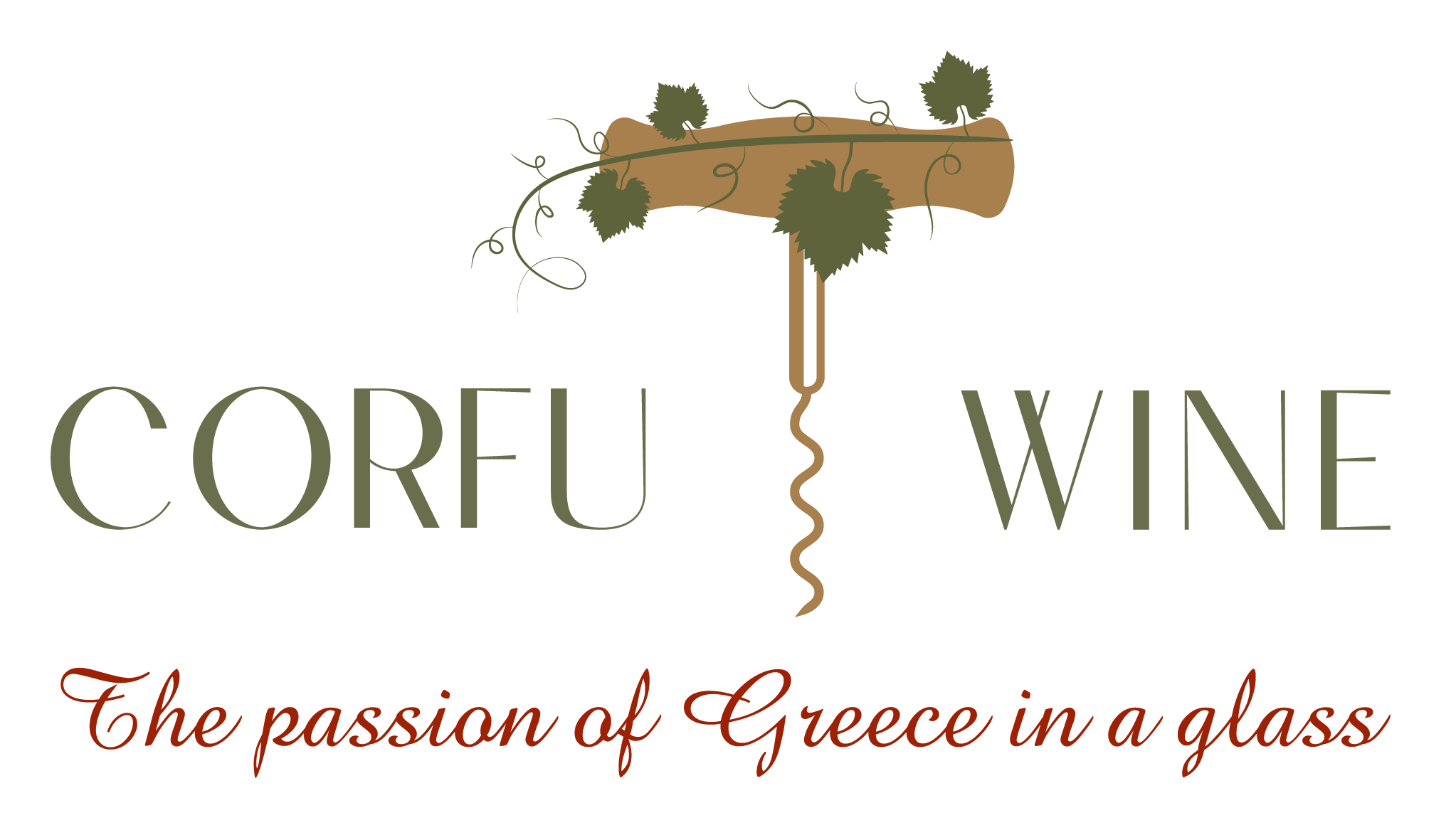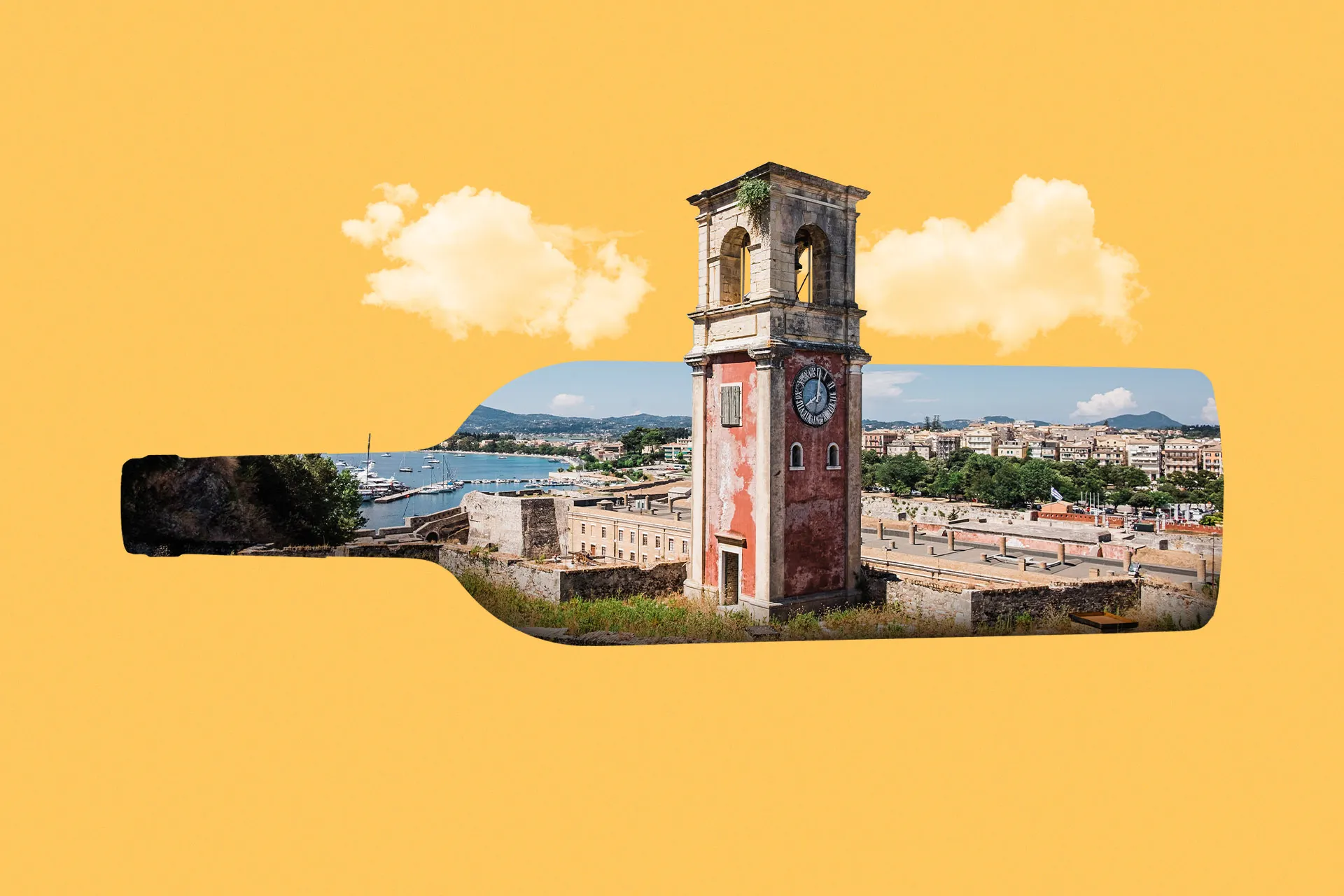
Getty Images
Corfu’s Rare Wines Are Flying Under the Radar
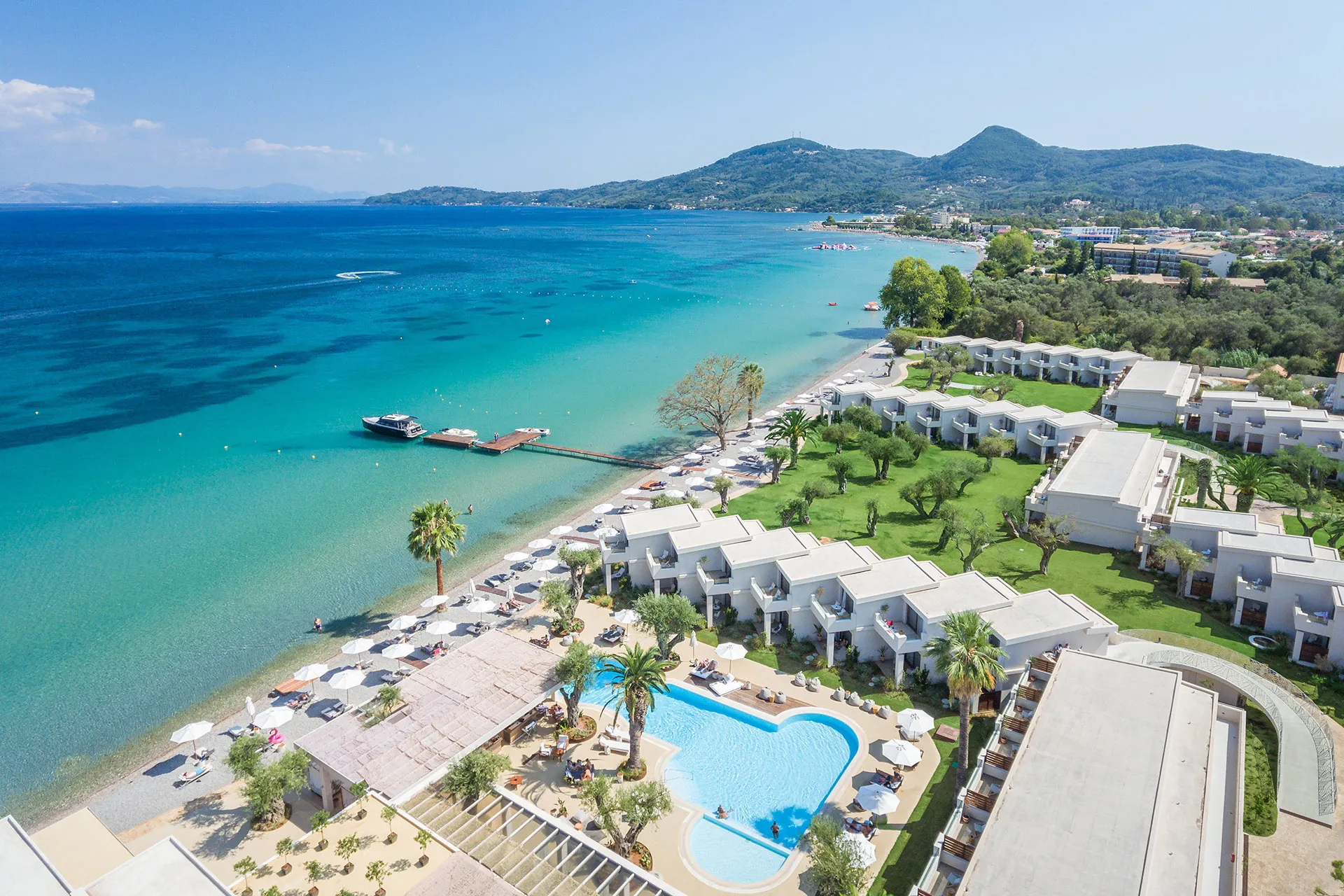
Image Courtesy of Marriott_International
Corfu, in particular, is distinctly wetter than its neighbors. At Greece’s northwesternmost frontier, just a few miles from the Albanian coast, it has a mild but humid Mediterranean climate with plenty of rainfall, especially in fall and winter. Antonis Katakis, the area food and beverage operations manager for Domes Resorts, says this “moisture demands attentive vineyard care to guard against disease”—but also provides “ideal conditions for a long ripening season,” resulting in wines with the layered character that comes with slower maturation.
Though Katakis notes the wine scene is “still emerging,” the Greek hospitality brand’s two local properties, Domes Miramare and Domes of Corfu, have begun to offer wine-tasting excursions for guests.
A Long and Winding Road
There are many interlocking reasons Corfu’s ancient reputation in the realm of wine has faded, despite everything it has going for it. Thanks to its position at the gateway to the Adriatic Sea, the island has been coveted by many empires, some of which prioritized winemaking more than others.
The Republic of Venice, which ruled Corfu for more than 400 years and shaped its culture significantly, initially promoted the industry. But incursions by the Ottoman Empire, which had conquered much of the rest of modern Greece, were not kind to the Corfu countryside. Though unsuccessful in taking over the island, the damage to the vines was done and Venetians eventually went all in on another agricultural product: olive oil. The planting of olive trees was heavily subsidized, and today, Corfu is still home to more than 4 million.
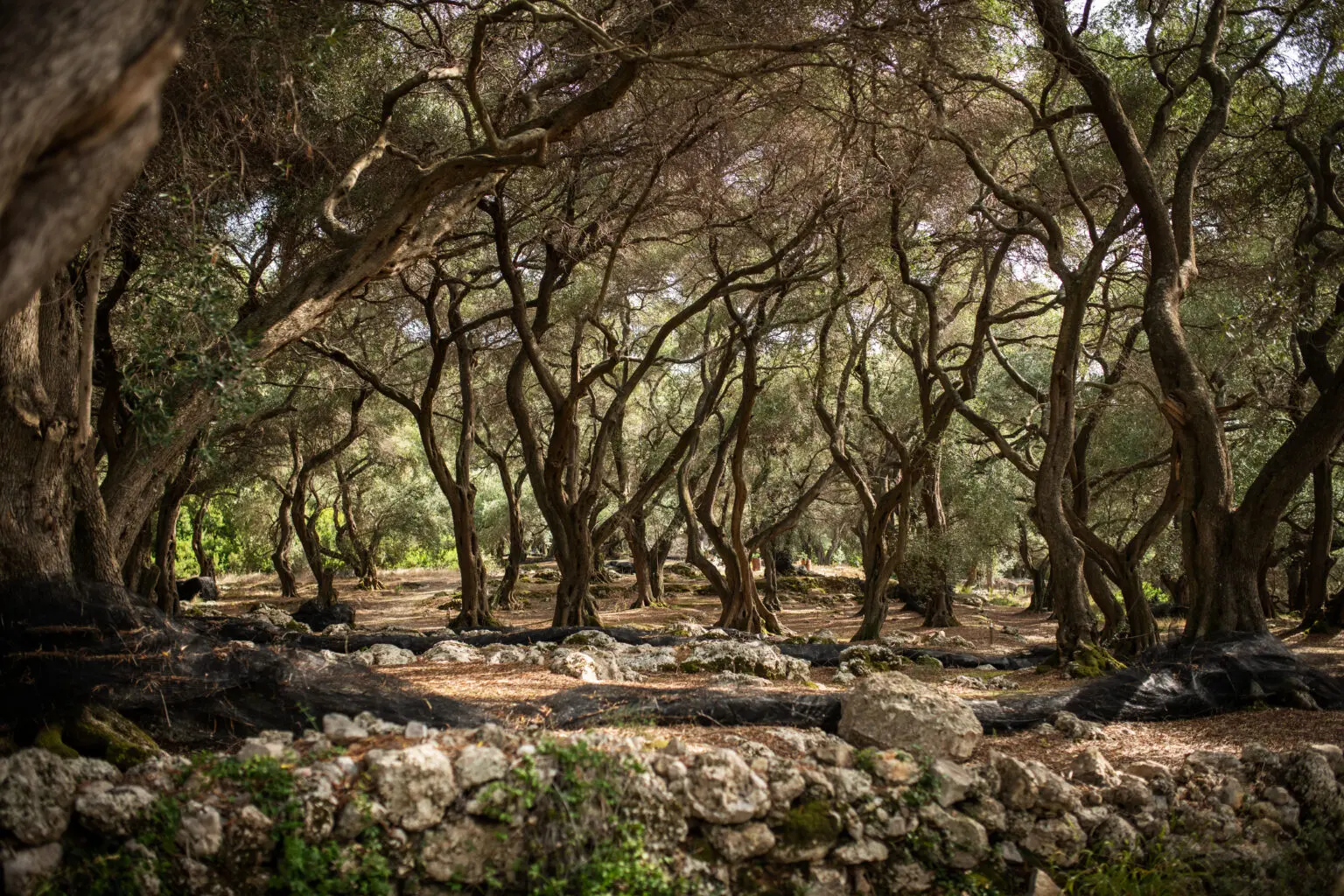
Getty Images
More recently, Corfu was ruled by the French, then the British, and in the 20th century pivoted toward yet another industry: tourism, becoming a favorite destination for European holidaymakers.
This tourism boom provided locals further incentive to let family vineyards go. Since then, Corfu has been somewhat overshadowed by its southern neighbor, Cephalonia, home to the Ionian region’s only wine Protected Designation of Origin (PDO)s. For a while, it seemed like the young energy and international buzz revivifying Greek wine elsewhere had largely passed Corfu by.
Not for long. “Corfu might not yet enjoy the winemaking acclaim of neighboring islands,” Katakis says, but lately, “it’s carving out its place.”
A Reemerging Industry Takes Root
These days, many of the island’s wineries are working to preserve the vines and methods that make Corfu wines so unique. “There is renewed interest in preserving Corfu’s indigenous grapes,” especially with a focus on sustainability, the team at Goulis Winery explains via email, noting that “small, family-run wineries like ours” are key players in the revival.
A natural wine producer based in the northwestern village of Liapades, Goulis exclusively uses grape varieties with deep roots on the island, such as white Kakotrygis and red Skopelitiko. The team uses low-intervention techniques to “allow the wines to express the true identity of the grapes and the terroir”—including the history that shaped both.
Goulis Winery, which was founded in 1992, has recently opened a small tasting room and will soon offer guided tours of the vineyard that touch on Corfu’s history of viticulture.
Goulis is joined by other operations, like Grammenos Winery and Nicoluzo Estate, in recentering indigenous or regionally specific grapes: Petrokoritho, Martzavi and more.

Dimitris Catechis / Image Courtesy of Corfu Wines
Some are also preserving or revitalizing vineyards abandoned in the 20th century and beyond. The family behind Pontiglio Winery, who have their own family vines dating back to at least 1850, also work on vineyard recovery in the south of the island, in addition to continuing Corfu’s rich tradition of skin-contact wines.
Others are even reverting to pre-industrial methods and equipment, like hand-operated wine presses and even old-school grape stomping, as at Ambelonas, which also produces olive oil the old-fashioned way and has a restaurant focused on Corfu’s Venetian-inflected traditional cuisine, with dishes such as slow-cooked veal pastitsada and stewed fish bourdeto, to complement the traditional wines.
Low-intervention agriculture, minimizing artificial inputs, is a widely shared priority: Theotoky Estate, perhaps the island’s most famous winery, is likely the only one to be certified organic (since 2016), but avoiding artificial fertilizers and pesticides and keeping operations small is common.
Catechis, who got into wine while living in New York City and pursued WSET certification before returning home to Corfu, says he is excited about the new generations of winemakers, “many of whom have studied and practiced abroad,” he explains. These young producers “have brought really exciting wines to the market, and brought the wine traditions of Corfu a step forward.”
The island’s limited-production wines are rarely seen outside of Greece, so the best way to get a taste for yourself is to visit. Whether you get lucky with a rare bottling in the States or decide to plan a trip, we’ve compiled a primer on the most important grapes to know.
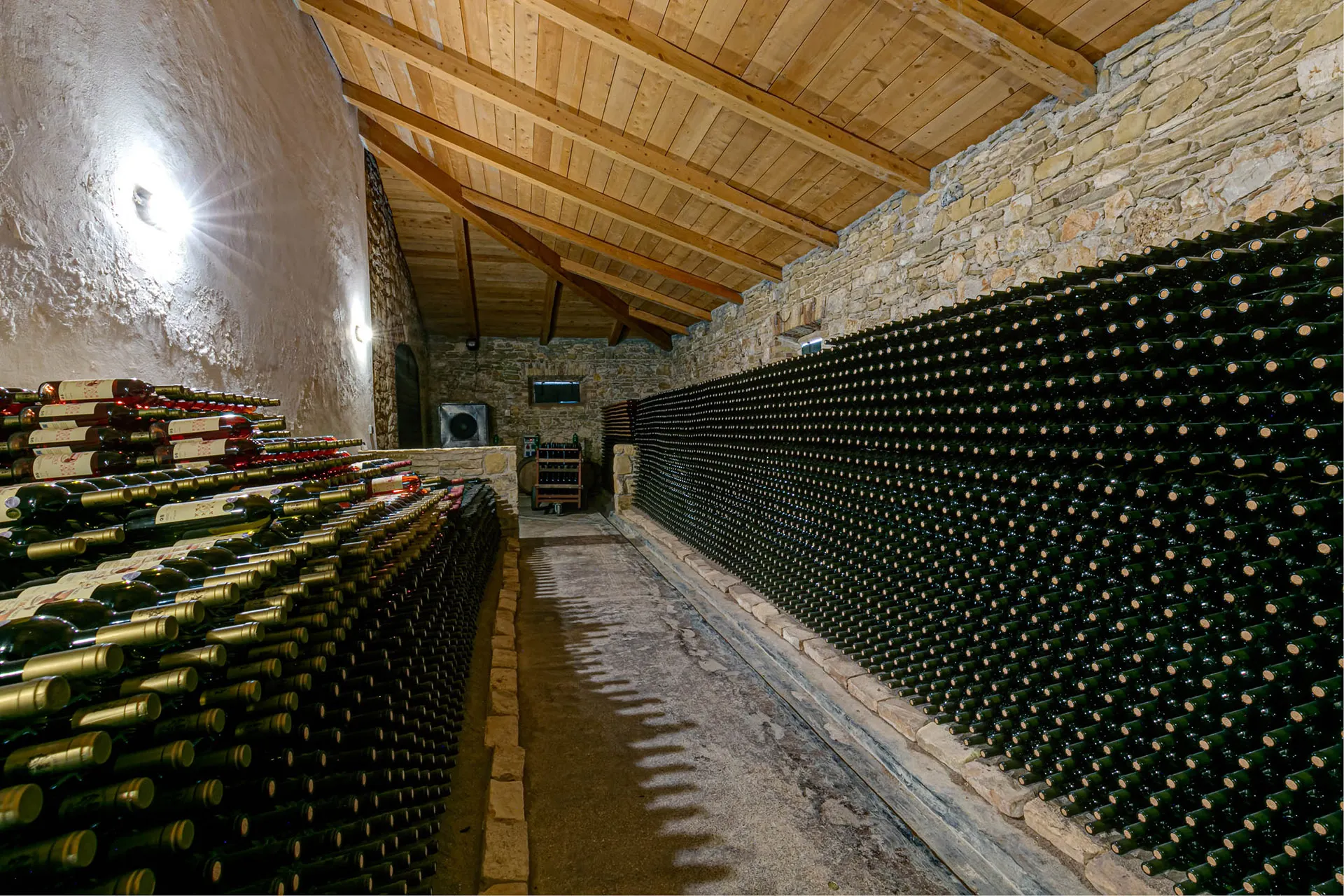
Photography by Stelios Lavranos
5 Essential Grapes to Understand Corfu Wine
Note: many of these varieties have multiple spellings when transliterated to English, and some of them might even have other names entirely. “Each population gives different names to these indigenous varieties,” from village to village, says Katakis, and more mapping will be necessary to catalog local names and the relationships between them.
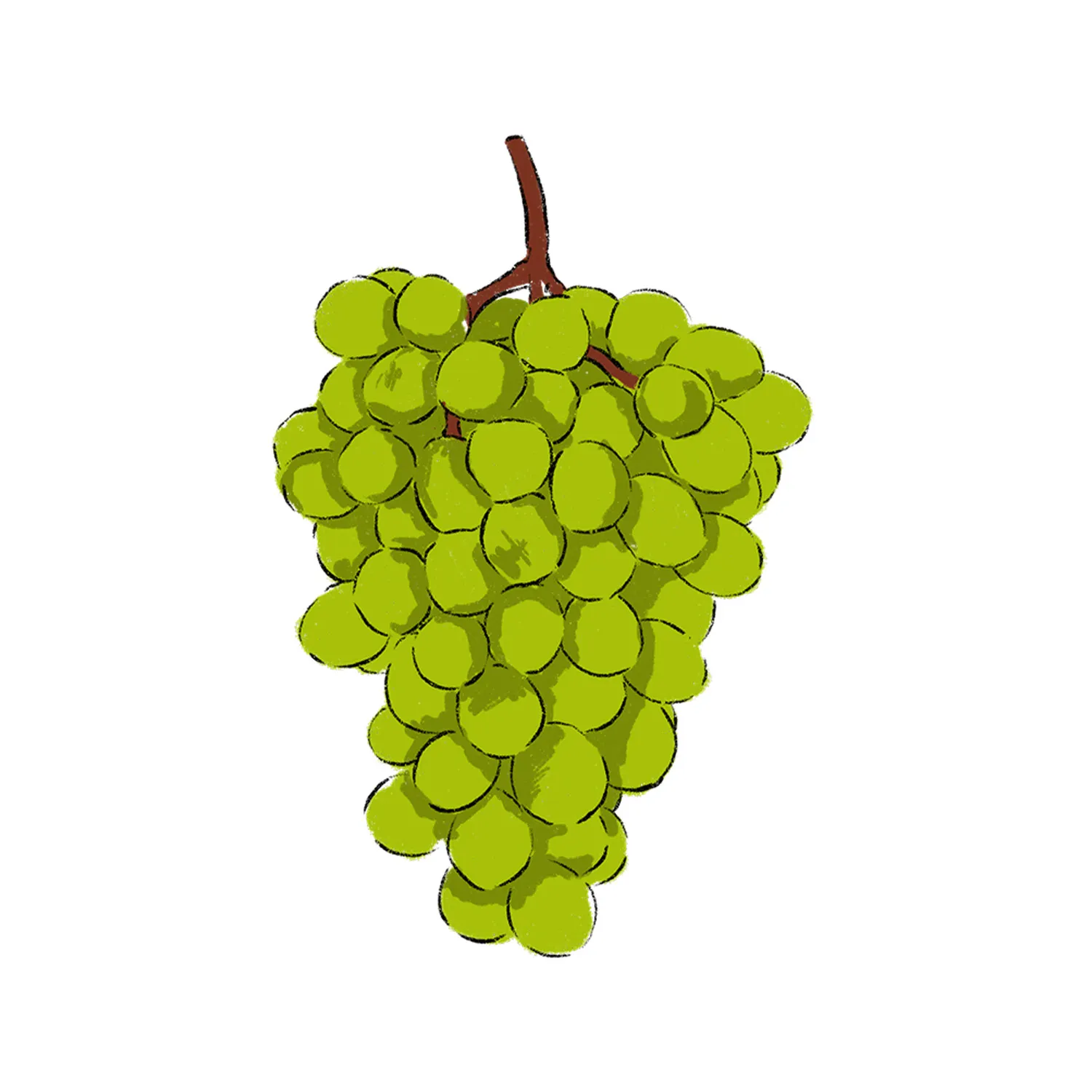
Wine Enthusiast
Kakotrygis
This white grape is the Corfu headliner, native to the island and rarely grown beyond its shores. Its name contains Greek root words for “bad” and “harvest”—but despite its densely-clustered, mildew-susceptible fruit, it’s a favorite among winemakers for the many styles in which it can be employed, especially Corfu’s signature whites. Catechis says that with some exceptions, these wines are meant to be enjoyed when they’re still young for the “refreshing acidity [and] aroma intensity of lemon blossom and citrus.”
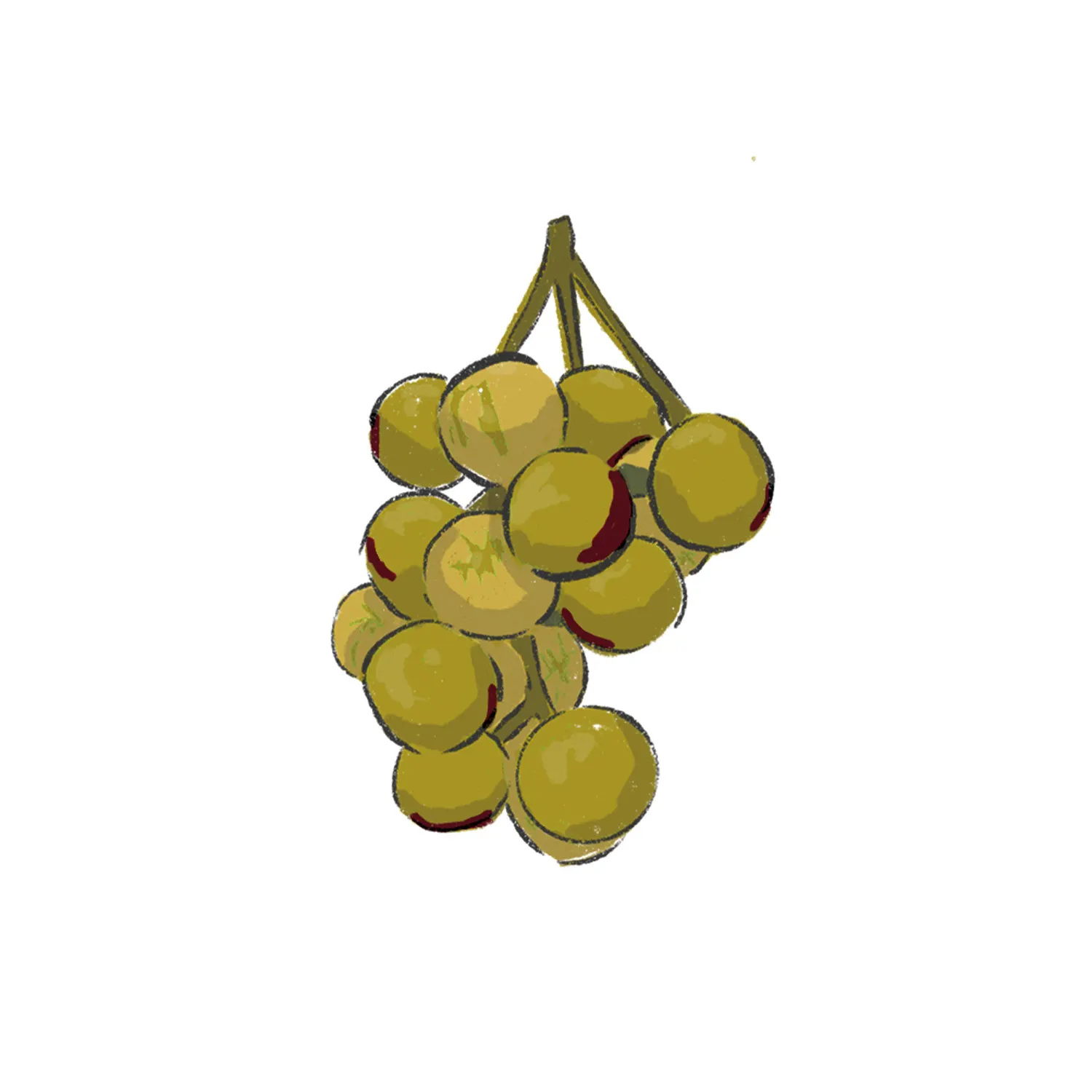
Wine Enthusiast
Petrokoritho (Mavro)
The island is mostly known for its white wines, but according to Katakis, “when it comes to indigenous red grape varieties, Corfu is a hidden treasure trove.” One of those varieties is Petrokoritho, a rare grape that has become a project for some producers—most notably Grammenos, which uses the grape for a delicate rosé.
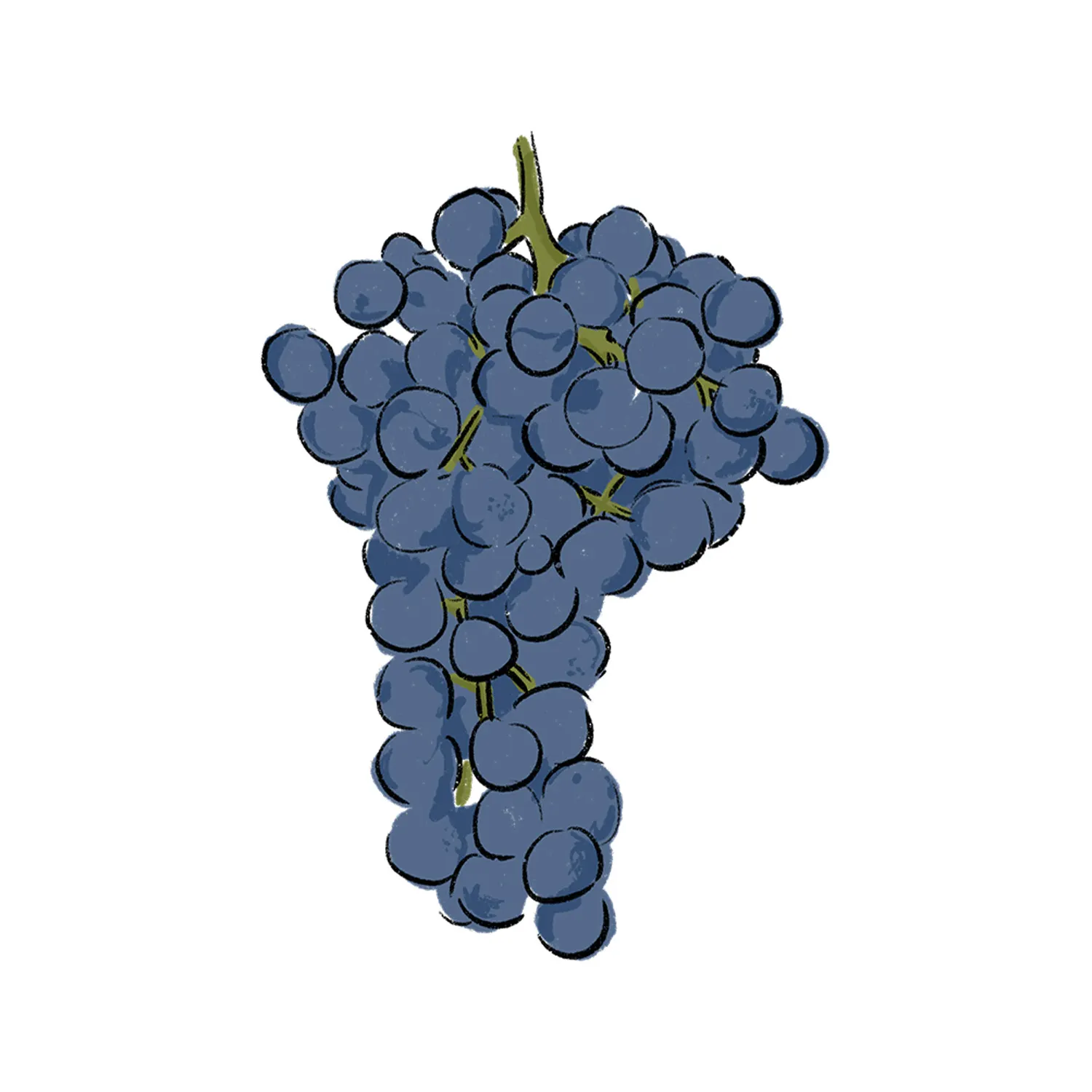
Wine Enthusiast
Skopelitiko
This dark-red fungus-resistant grape is sometimes said to have been brought to Corfu by monks from the Aegean island of Skopelos. Whatever its provenance, Skopelitiko “has found a natural home in Corfu’s terroir,” Katakis says, and “yields light-bodied, fruity reds with moderate acidity and low alcohol, making it ideal for easy-drinking styles.” Some wineries, including Pontiglio, have also started exploring its use in rosés.
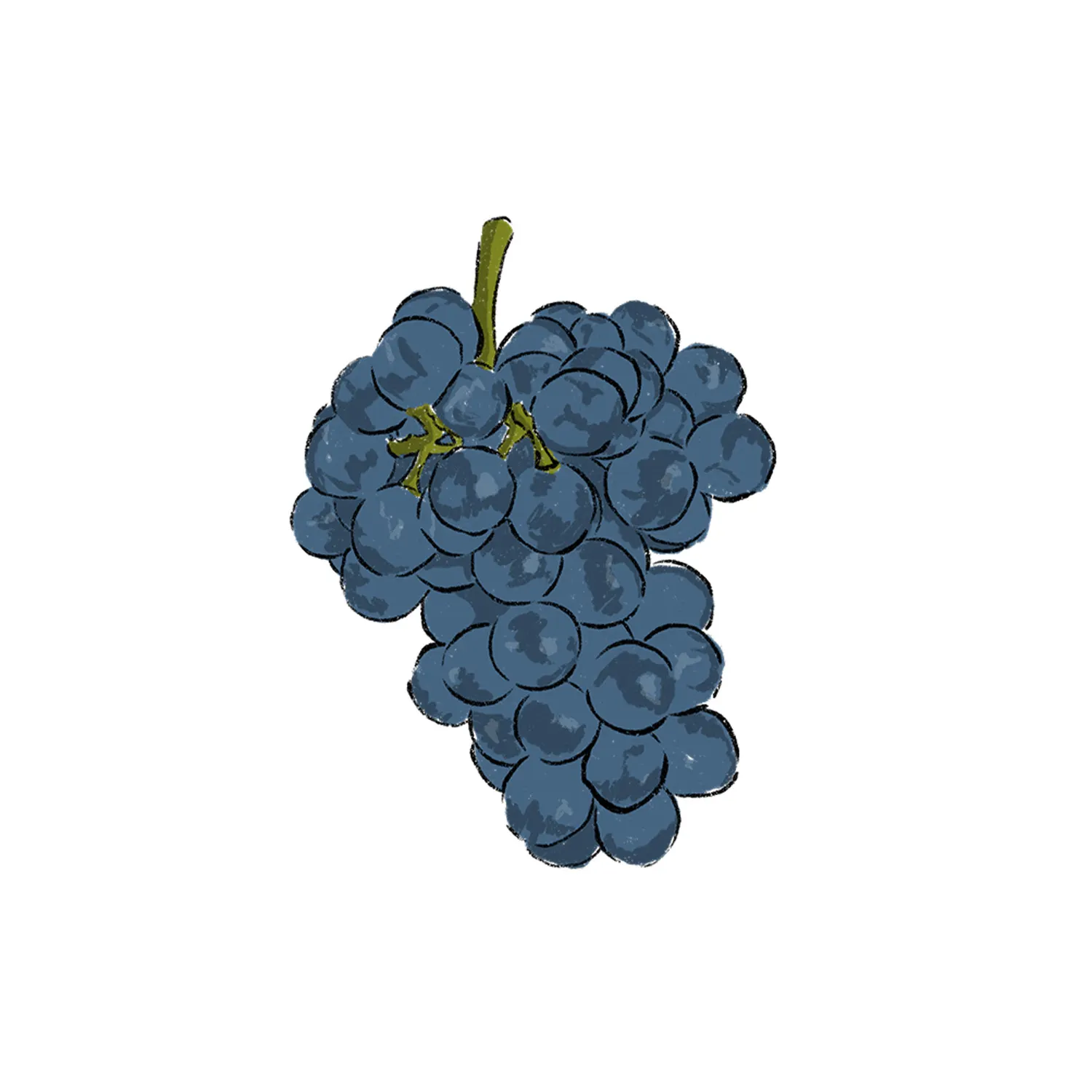
Wine Enthusiast
Martzavi
This red grape is also known under many other spellings, including Mantzavi, Vertzami or Bertzami. Goulis Winery cultivates Martzavi along with the more common Skopelitiko and Kakotrygis, and the grape is also grown elsewhere in the region, especially on the island of Lefkada, between Corfu and Cephalonia.
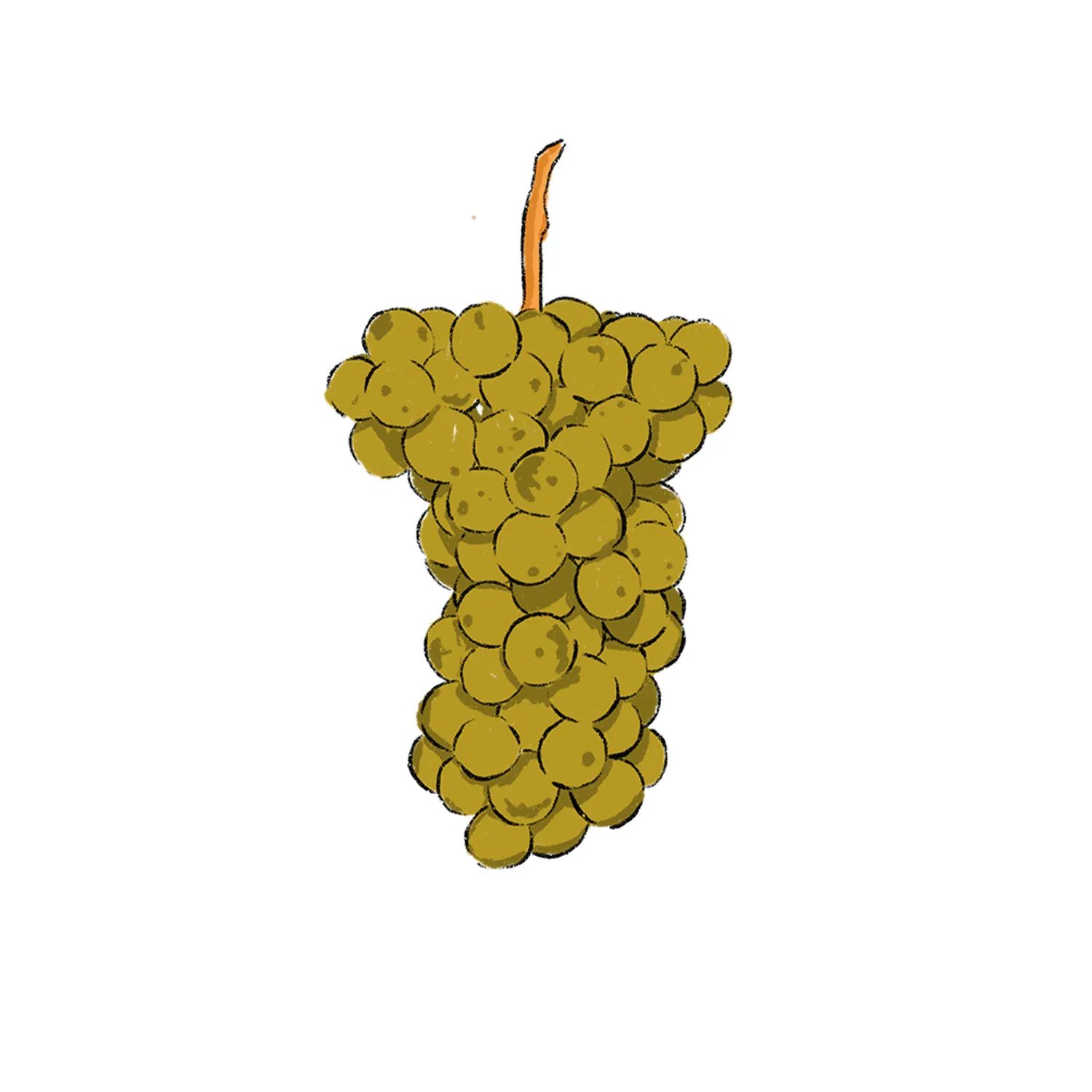
Wine Enthusiast
Robola
This white grape is strongly associated with Cephalonia, where it has PDO designation. But “the wines made from Robola grapes in Corfu are quite different,” Catechis says, lighter in body and “with milder acidity and milder aromatic intensity.” Corfiot Robola wines even make a cameo in 1981’s For Your Eyes Only: Bond is recommended a Robola from Cephalonia and declines, saying, “I find that a little too scented for my palate. I prefer the Theotoky Aspro”—from Corfu, obviously.
